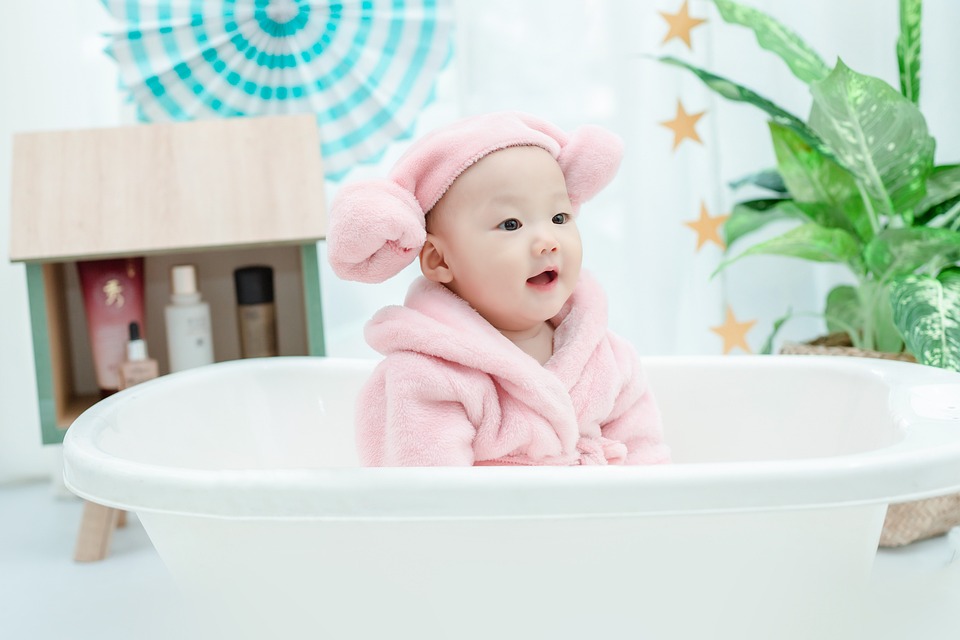
Bath time can be a delightful bonding experience between parents and their newborns. However, it can also feel daunting, especially for new parents unsure about the best practices for ensuring their baby’s safety and comfort. With the right knowledge and preparation, bath time can be transformed into a soothing and enjoyable ritual for both parent and child. This article outlines essential tips for making baby bath time safe, effective, and enjoyable.
Setting Up the Environment
A well-prepared environment is crucial for a successful bath time. Before you begin, gather all necessary supplies so you won’t need to leave your baby unattended. Essential items include a baby bathtub or a sink, mild baby soap and shampoo, two washcloths, a cup for rinsing, and a hooded towel. Make sure the room is warm enough to prevent your baby from getting cold.
Choosing the Right Baby Bathtub
The market offers various types of baby bathtubs, each catering to different needs and preferences. Some parents prefer a traditional plastic baby tub, while others might opt for a sink insert or an inflatable tub. Whichever you choose, ensure it has a non-slip surface and provides adequate support for your baby’s head and neck.
Safety First
Safety is paramount during bath time. Always keep one hand on your baby, and never leave them unattended, even for a moment. Fill the tub with only 2-3 inches of water, and always test the water temperature with your wrist or elbow to ensure it’s not too hot. Ideally, the water should be around 100°F (37.8°C).
Preventing Slips and Falls
Babies can be slippery when wet. Use a rubber mat or a towel at the bottom of the tub to prevent slipping. If your baby is old enough to sit up, you may use a bath seat for additional support, but remember, this does not replace your supervision.
Bathing Techniques
Developing a consistent and effective bathing routine can help your baby feel more comfortable during bath time. Start by gently laying your baby in the tub, supporting their head and neck. Use the cup to pour warm water over their body, keeping them warm throughout the bath.
Cleansing Your Baby
Use a small amount of mild baby soap or cleanser on a washcloth to gently clean your baby’s skin. Pay special attention to folds and creases, as these areas can harbor dirt and bacteria. Rinse thoroughly with clean water to remove all soap residues.
Washing Hair
To wash your baby’s hair, gently tilt their head back while using the cup to pour water over their head. Apply a small amount of baby shampoo, lather, and rinse with clean water. Be cautious to avoid getting soap in their eyes, and always support their head and neck.
After Bath Care
After the bath, immediately wrap your baby in a hooded towel to keep them warm. Gently pat them dry, paying close attention to skin folds where moisture can accumulate. Applying a gentle, hypoallergenic baby lotion can help keep their skin soft and hydrated.
Maintaining Hygiene
Regularly cleaning and drying bath toys and tubs is essential to prevent the growth of mold and bacteria. After each bath, rinse toys and the tub with clean water and allow them to air dry. Periodically wash toys in warm, soapy water.
Creating a Relaxing Routine
Bath time can be a calming and enjoyable experience, setting the tone for a restful night’s sleep. Consider incorporating soothing elements such as soft music or gentle lullabies. A consistent routine can help signal to your baby that it’s time to wind down.
Bonding During Bath Time
Use bath time as an opportunity to bond with your baby. Talk to them in a soothing voice, sing songs, or engage in gentle play. Your calm presence and reassuring touch can help your baby feel secure and loved.
Addressing Common Concerns
Even seasoned parents can face challenges during baby bath time. It’s essential to address common concerns to make the experience as smooth as possible.
Dealing with a Fussy Baby
If your baby is fussy during bath time, try to identify the cause. They might be hungry, tired, or uncomfortable with the water temperature. Adjusting these factors can help soothe your baby. If they continue to show distress, consider shortening the bath or trying again later.
Handling Cradle Cap
Cradle cap is a common condition in newborns characterized by yellowish, scaly patches on the scalp. To manage cradle cap, gently massage a small amount of baby oil onto the affected areas before bath time. During the bath, use a soft brush to gently loosen the scales, and wash with a mild baby shampoo.
Conclusion
Bath time is an essential part of your baby’s routine, offering numerous benefits for both hygiene and bonding. By following these essential baby bath time tips, you can ensure a safe, enjoyable, and stress-free experience for both you and your little one. Remember to approach bath time with patience and care, and enjoy these precious moments with your baby.
#ChatGPT assisted in the creation of this article.







